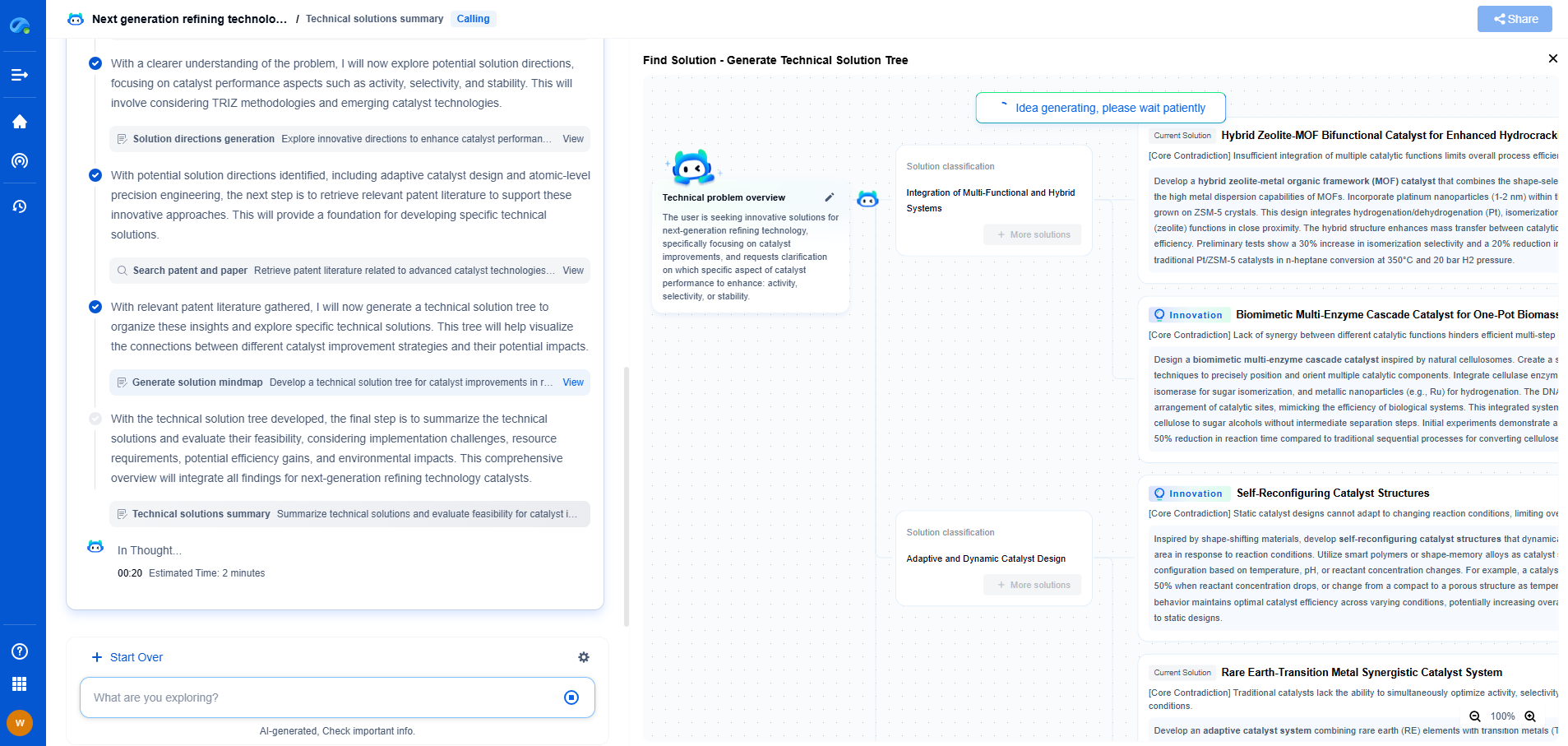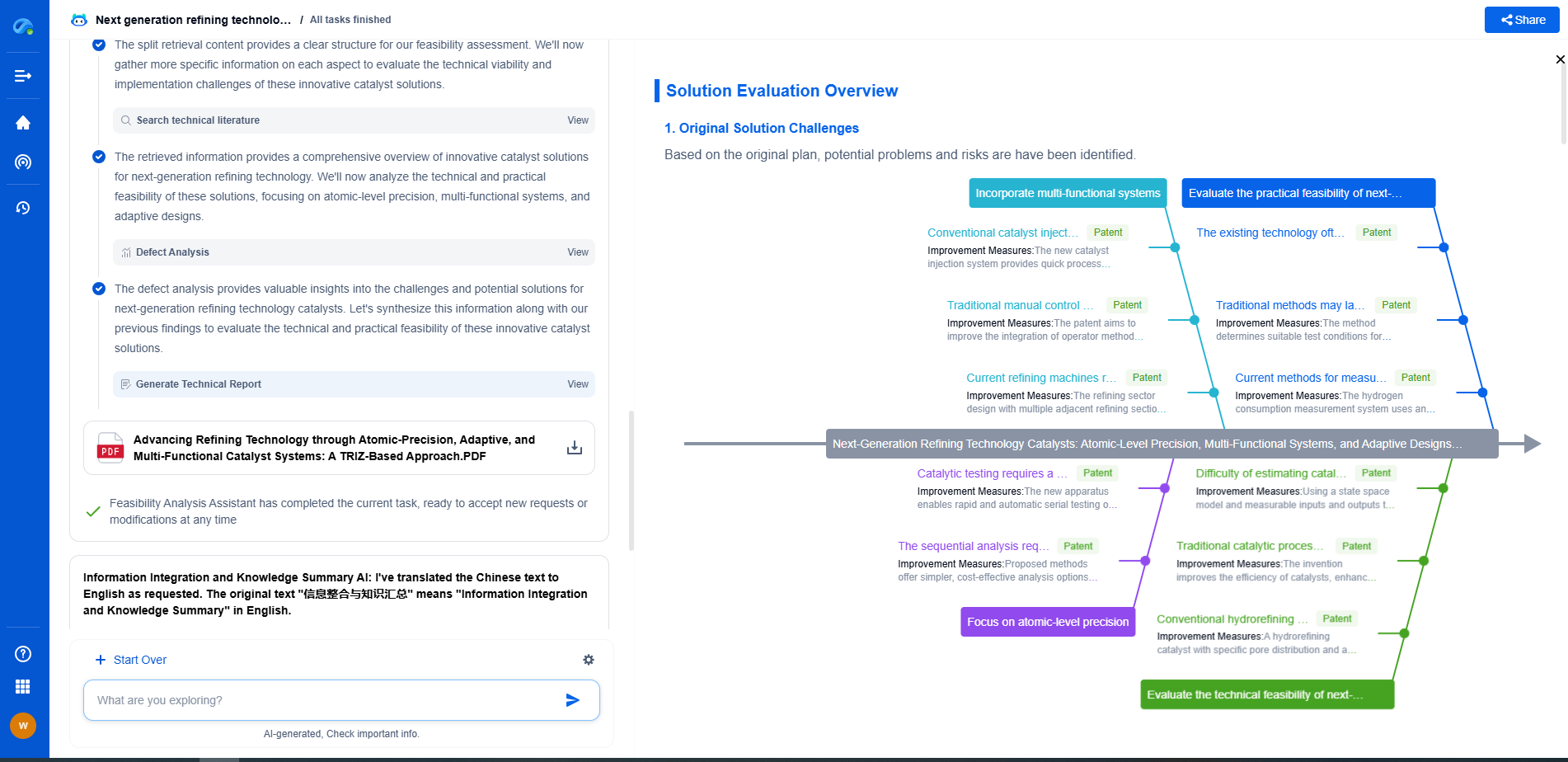MIL-STD-810H vs. 810G: Key Differences in Shock and Vibration Testing
JUL 16, 2025 |
When it comes to ensuring the durability and robustness of electronic devices, equipment, and other technologies, military standards such as MIL-STD-810 provide a reliable framework for testing. These standards help manufacturers design products that can withstand various environmental stresses. MIL-STD-810G and its successor, MIL-STD-810H, are two widely recognized versions of this standard. While they share a common goal, they differ in certain aspects, particularly in shock and vibration testing. Let's explore these key differences and understand their implications for product testing and development.
Overview of MIL-STD-810G and MIL-STD-810H
MIL-STD-810G was introduced in 2008 and served as a comprehensive guide for environmental engineering considerations and laboratory tests. It was a significant update to its predecessor, MIL-STD-810F, incorporating advancements in testing methodologies and technology. This standard has been widely adopted across various industries beyond defense, including consumer electronics, automotive, and aerospace.
MIL-STD-810H, released in 2019, builds upon the foundation set by 810G. It reflects nearly a decade of technological progress and evolving industry needs. The update aimed to enhance the relevance and applicability of testing procedures in light of new environmental challenges and material innovations.
Shock Testing: What Has Changed?
Shock testing is vital for assessing a device's ability to withstand sudden impacts or forces. It simulates conditions such as drops, crashes, and other impacts that a product might encounter during its life cycle.
Under MIL-STD-810G, shock testing was broadly defined and provided a general framework for testing. This version guided testers to select appropriate shock levels based on the device's intended use and anticipated real-world conditions. However, the guidelines left room for interpretation, leading to potential variability in testing outcomes.
The introduction of MIL-STD-810H brought more specificity to shock testing. It includes clearer definitions of test levels, durations, and the number of repetitions necessary for a comprehensive evaluation. This specificity aims to reduce ambiguities and standardize testing procedures across different testing facilities, leading to more consistent and reliable results.
Vibration Testing: Enhancements and Clarifications
Vibration testing examines how a product behaves under continuous oscillatory motion, which is crucial for determining its durability in transportation or operational environments.
MIL-STD-810G provided a solid framework for vibration testing but allowed flexibility in testing parameters. While this flexibility was beneficial for customized testing, it sometimes resulted in inconsistent test conditions and outcomes across different products and industries.
MIL-STD-810H addresses these challenges by introducing more detailed guidance on vibration profiles, test durations, and frequencies. It emphasizes tailoring the testing process to match the realistic conditions a product will face, ensuring the test is neither overly harsh nor lenient. This balanced approach is intended to improve the accuracy of vibration testing and ensure devices can endure the specific environments they are likely to encounter.
Implications for Manufacturers and Engineers
The transition from MIL-STD-810G to MIL-STD-810H represents an evolution towards more precise and reliable testing standards. For manufacturers and engineers, this shift means a greater emphasis on understanding the specific conditions their products will face and selecting appropriate test parameters accordingly.
Adopting MIL-STD-810H can lead to several benefits. Firstly, it can enhance the credibility of products by ensuring they meet rigorous and consistent standards, which is particularly crucial in competitive markets. Secondly, it can reduce the risk of product failures in the field, saving costs associated with repairs, returns, and reputation damage. Lastly, it can foster innovation by encouraging the development of products that are truly built to endure challenging environments.
Conclusion
In the ever-evolving landscape of technology and manufacturing, keeping up with the latest testing standards is essential for ensuring product reliability and performance. MIL-STD-810H builds upon the foundations of MIL-STD-810G by offering more detailed and specific guidelines for shock and vibration testing. By adopting these updated standards, manufacturers can achieve greater consistency in testing outcomes, ultimately leading to more durable and trustworthy products. As industries continue to demand higher levels of quality and resilience, adhering to these standards becomes not just a requirement but a strategic advantage.
In the world of vibration damping, structural health monitoring, and acoustic noise suppression, staying ahead requires more than intuition—it demands constant awareness of material innovations, sensor architectures, and IP trends across mechanical, automotive, aerospace, and building acoustics.
Patsnap Eureka, our intelligent AI assistant built for R&D professionals in high-tech sectors, empowers you with real-time expert-level analysis, technology roadmap exploration, and strategic mapping of core patents—all within a seamless, user-friendly interface.
⚙️ Bring Eureka into your vibration intelligence workflow—and reduce guesswork in your R&D pipeline. Start your free experience today.
- R&D
- Intellectual Property
- Life Sciences
- Materials
- Tech Scout
- Unparalleled Data Quality
- Higher Quality Content
- 60% Fewer Hallucinations
Browse by: Latest US Patents, China's latest patents, Technical Efficacy Thesaurus, Application Domain, Technology Topic, Popular Technical Reports.
© 2025 PatSnap. All rights reserved.Legal|Privacy policy|Modern Slavery Act Transparency Statement|Sitemap|About US| Contact US: help@patsnap.com

